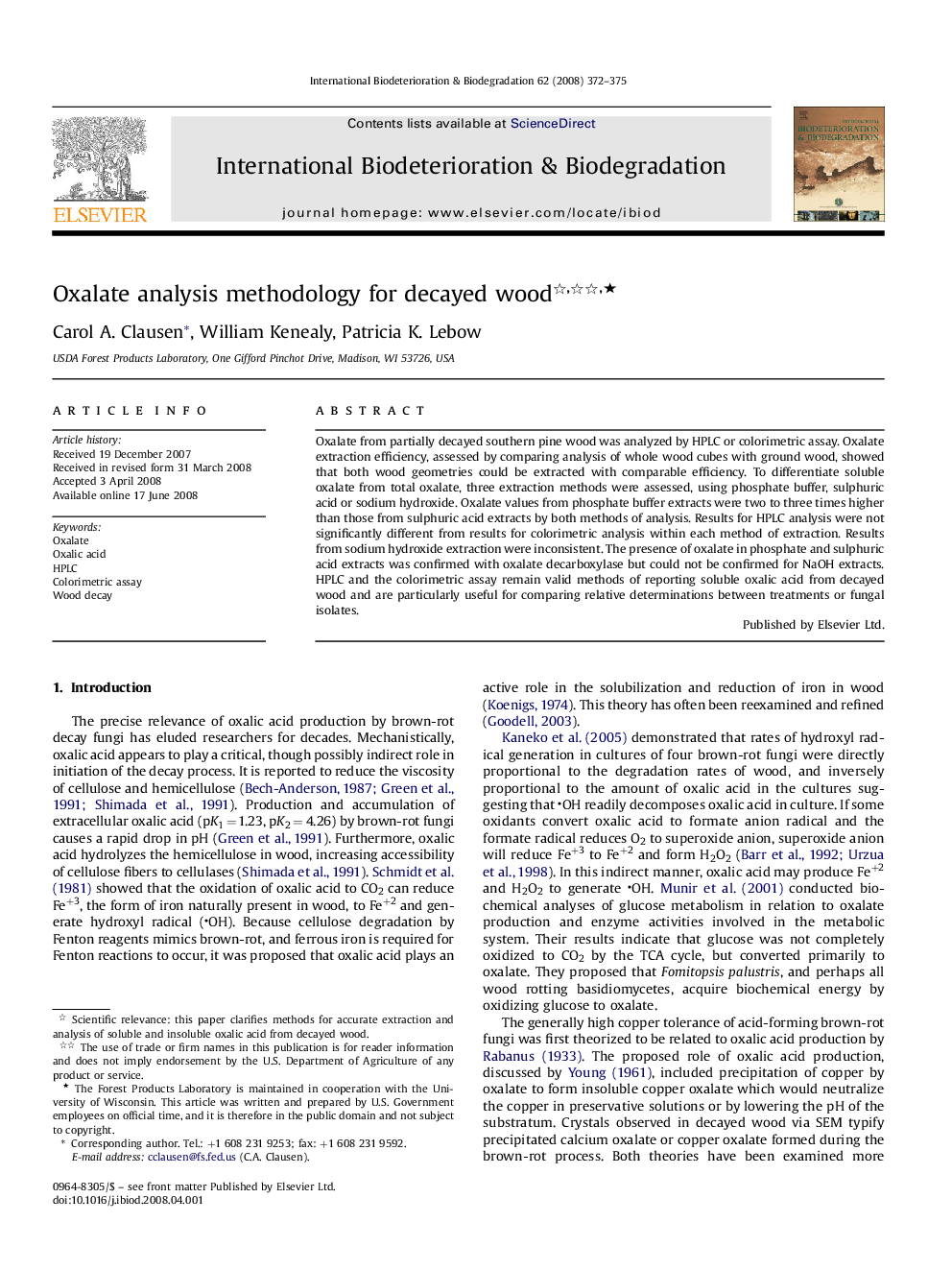| Article ID | Journal | Published Year | Pages | File Type |
|---|---|---|---|---|
| 4365756 | International Biodeterioration & Biodegradation | 2008 | 4 Pages |
Oxalate from partially decayed southern pine wood was analyzed by HPLC or colorimetric assay. Oxalate extraction efficiency, assessed by comparing analysis of whole wood cubes with ground wood, showed that both wood geometries could be extracted with comparable efficiency. To differentiate soluble oxalate from total oxalate, three extraction methods were assessed, using phosphate buffer, sulphuric acid or sodium hydroxide. Oxalate values from phosphate buffer extracts were two to three times higher than those from sulphuric acid extracts by both methods of analysis. Results for HPLC analysis were not significantly different from results for colorimetric analysis within each method of extraction. Results from sodium hydroxide extraction were inconsistent. The presence of oxalate in phosphate and sulphuric acid extracts was confirmed with oxalate decarboxylase but could not be confirmed for NaOH extracts. HPLC and the colorimetric assay remain valid methods of reporting soluble oxalic acid from decayed wood and are particularly useful for comparing relative determinations between treatments or fungal isolates.
